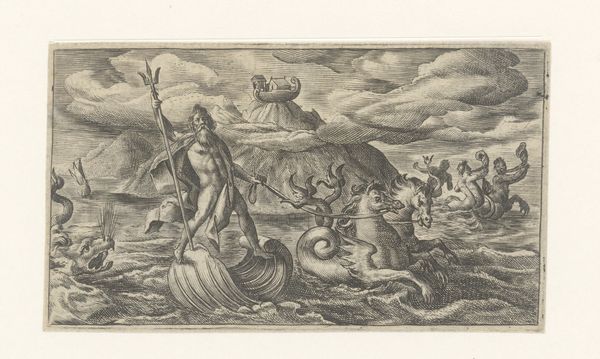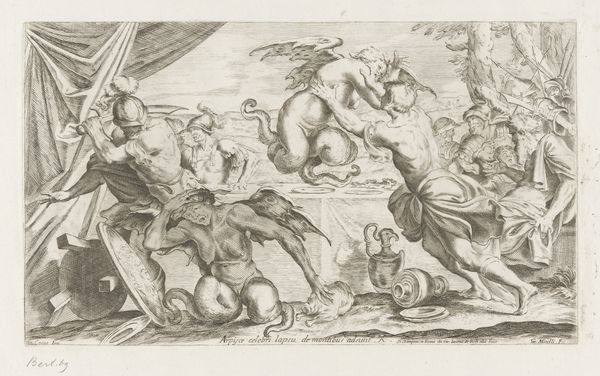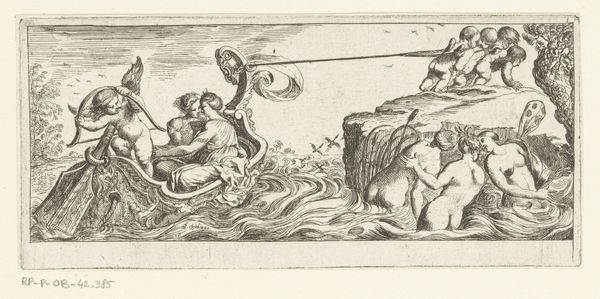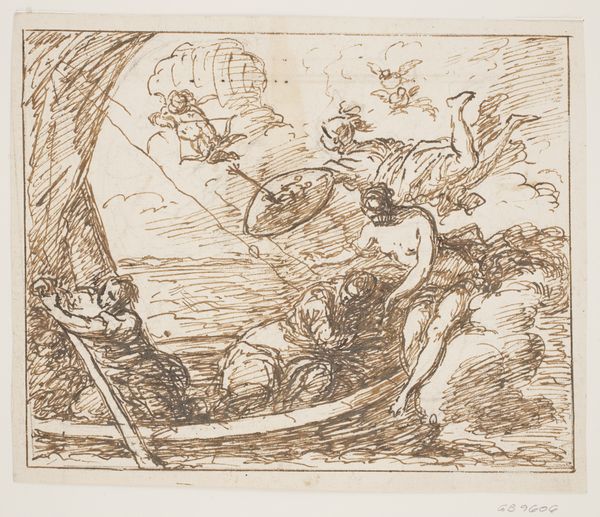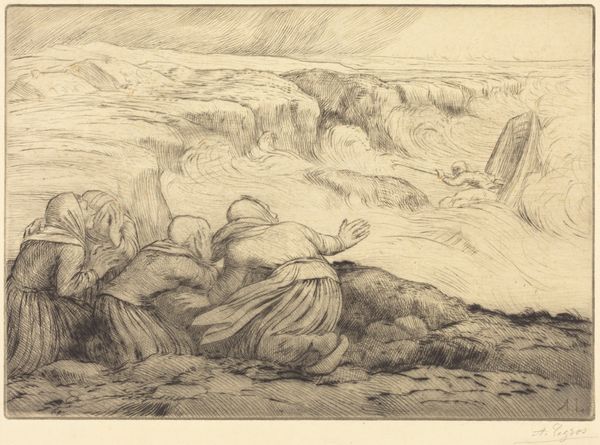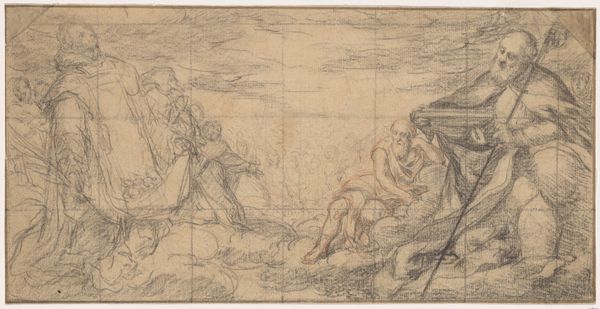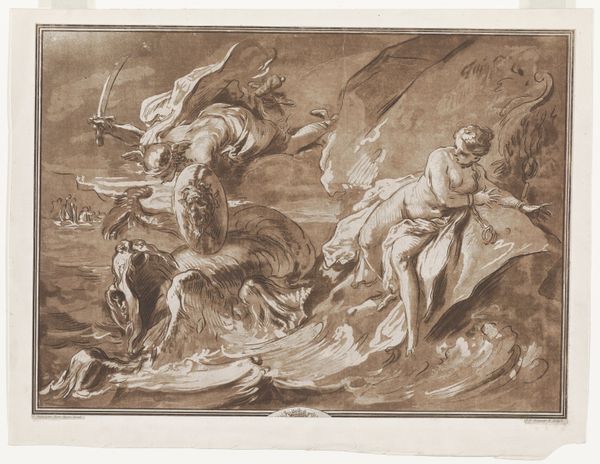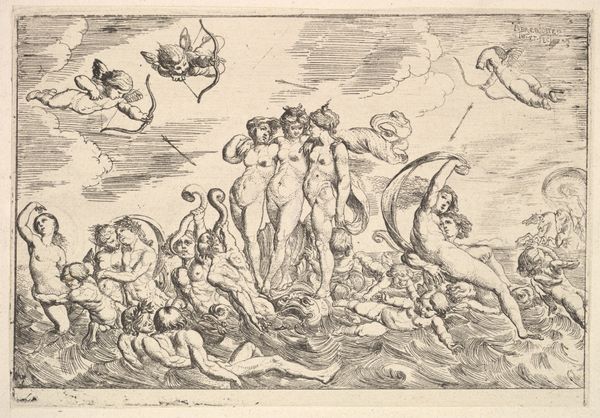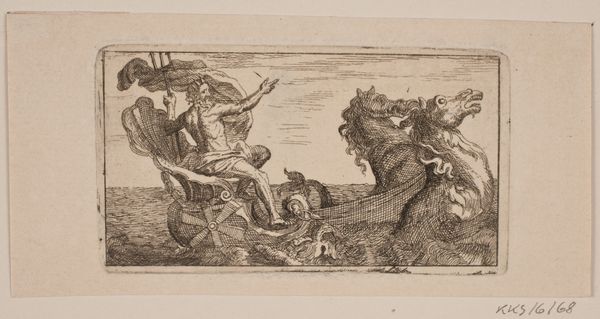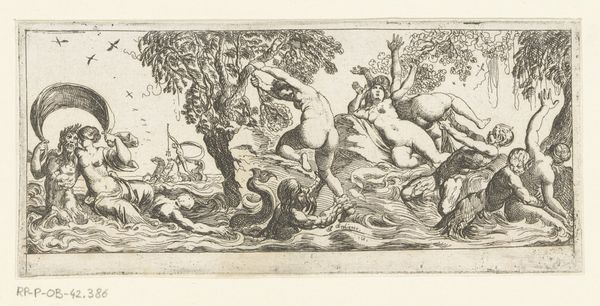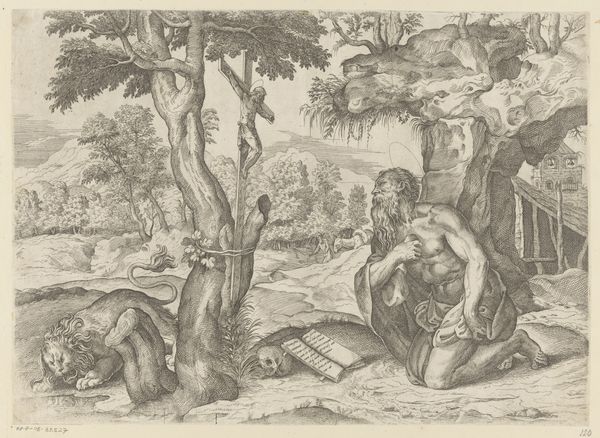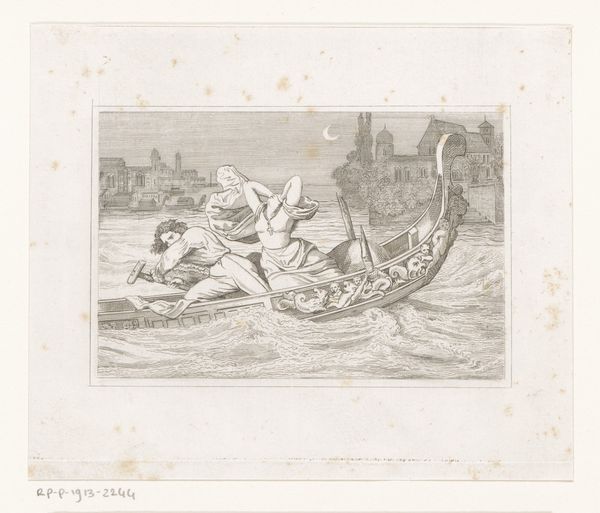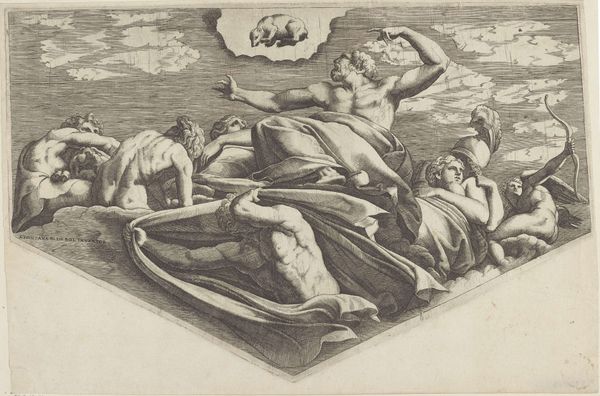
print, engraving
#
ink drawing
#
baroque
# print
#
pen sketch
#
landscape
#
figuration
#
history-painting
#
engraving
Dimensions: height 245 mm, width 504 mm
Copyright: Rijks Museum: Open Domain
Editor: This engraving, "Polyphemus Chasing the Fleet of Aeneas" by Giuseppe Maria Mitelli, dates back to 1663. The frantic energy of the scene, with Polyphemus towering over the water, is really striking. How do you interpret this work? Curator: It’s a potent image, isn’t it? The scene comes from Virgil's "Aeneid," but more than just an illustration, I see it reflecting anxieties around power and displacement that resonate even today. The defeated Trojan hero Aeneas is fleeing, trying to establish a new lineage, and Polyphemus, the monstrous cyclops, embodies the brute force opposing him. Think about how baroque art often depicted narratives of upheaval. Mitelli is engaging with themes of colonialism, exile, and the struggle for legitimacy. Editor: Colonialism? I hadn't thought about that connection. So, you see Polyphemus not just as a mythological figure, but as a symbol of oppressive power? Curator: Precisely. And Aeneas, though ostensibly the hero, also represents the complexities of empire building, right? What does it mean to "found" a civilization after fleeing conflict? His journey involved taking land and displacing other people, a narrative often glossed over. It forces us to confront whose stories get told and whose are erased in these grand historical narratives. Editor: That definitely shifts my understanding. The focus isn’t just on a straightforward hero's journey, but on the broader implications of that journey and who gets impacted along the way. Curator: Exactly. And even consider the medium: engraving. Prints like these were how stories and ideologies were disseminated, weren’t they? How these images played a role in shaping European perceptions. Editor: It’s interesting to consider how art, even something from the 17th century, can hold such relevant commentary on power dynamics. Curator: Indeed. By examining historical narratives critically, we can understand how power operates in the present.
Comments
No comments
Be the first to comment and join the conversation on the ultimate creative platform.
